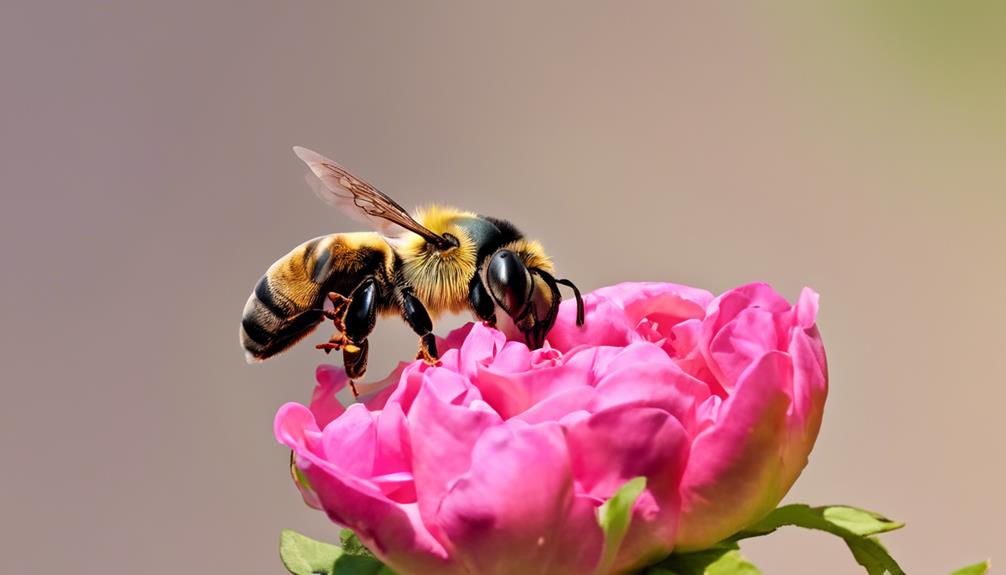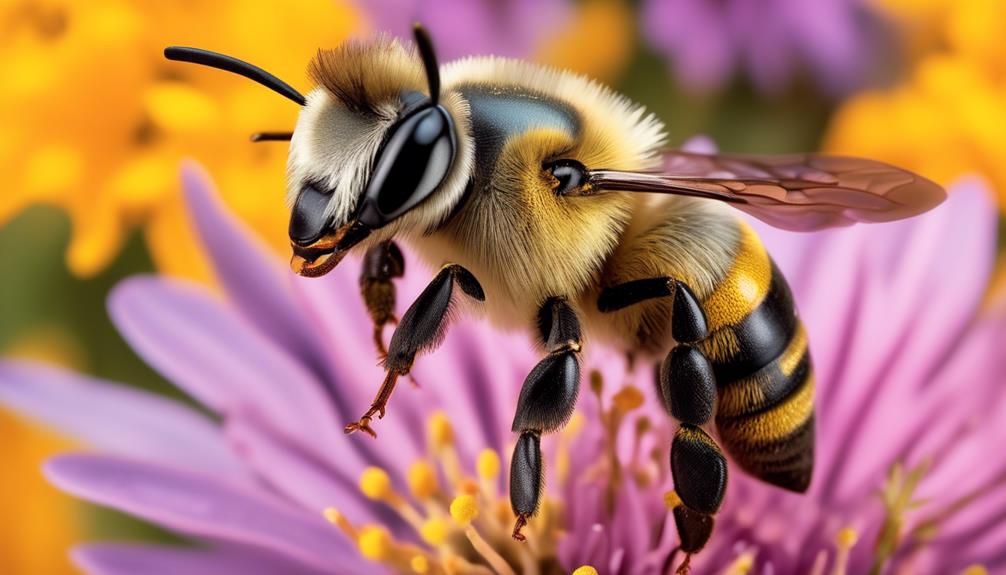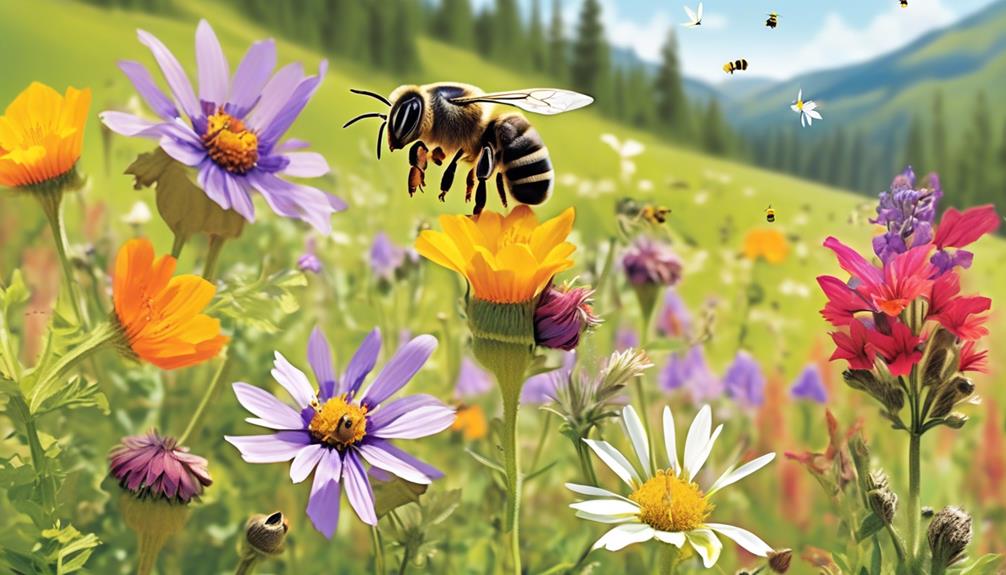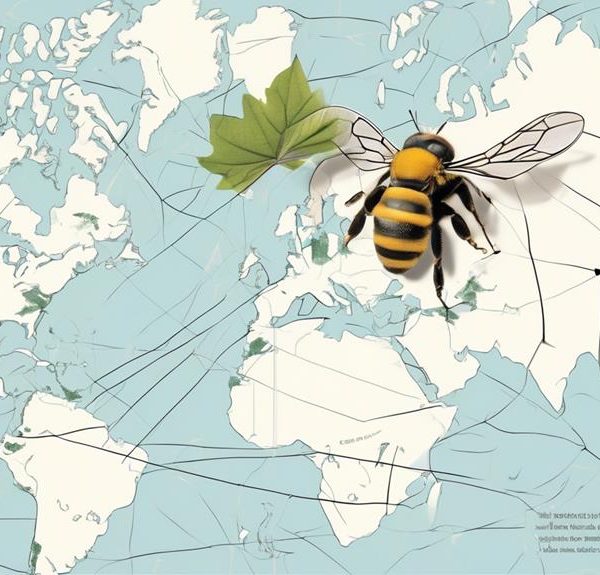Heralded as nature's pollinators, discover the wide array of plants leaf cutter bees help to thrive, in a world often unseen.

What Do Leaf Cutter Bees Pollinate
You might not give much thought to the humble leaf cutter bee, but these tiny garden guests are doing a lot more than just playing hide and seek in your foliage. You're probably aware of their leaf-cutting antics, but you might be surprised to learn about their crucial role as pollinators.
Leaf cutter bees have a unique way of carrying pollen on their undersides, making them extremely efficient at pollinating a wide range of plants. But which specific plants owe their existence to these diligent insects? Let's just say, the list is longer than you might imagine, and it's a topic well worth exploring further.
Key Takeaways
- Leaf cutter bees play a crucial role in maintaining biodiversity through their efficient pollination process.
- Unlike honeybees, leaf cutter bees carry pollen on their abdomen, making them more efficient in transferring pollen between flowers.
- Leaf cutter bees are adept at cutting precise circular and oval pieces from leaves, which they use to line their nests and provide a protective environment for their young.
- Leaf cutter bees are important pollinators for various plant species including alfalfa, blueberries, chokecherries, sunflowers, and wild roses.
Understanding Leaf Cutter Bees

To fully appreciate the role of leaf cutter bees in pollination, you'll first need to understand their unique characteristics and behaviors. Unlike honeybees, leaf cutter bees are solitary creatures. Each female creates her own nest, often in hollow stems or holes in wood. She doesn't produce honey or beeswax but creates her nest using pieces of leaves, hence the name.
Now, you're probably wondering, 'What's so special about these leaf cutters?' Well, they're exceptional pollinators. When a leaf cutter bee visits a flower, she gathers pollen on the hairs of her abdomen. Unlike honeybees that carry pollen on their hind legs, leaf cutters carry it on their abdomen, which comes into direct contact with the flower's reproductive parts. This makes them more efficient in transferring pollen between flowers, facilitating successful plant reproduction.
Moreover, these bees aren't aggressive. They only sting when threatened, making them safe to have around your garden. Understanding these behaviors and characteristics of leaf cutter bees, you can see why they're integral to our ecosystem. Their unique way of pollinating plants plays a crucial role in maintaining biodiversity.
Unique Leaf-Cutting Habits Explored

Building on the understanding of their pollination process, let's explore the fascinating, unique leaf-cutting habits that give these bees their name. Leafcutter bees, unlike their honeybee counterparts, don't build wax combs. Instead, they're solitary creatures, creating individual nests in hollow stems or holes in wood.
You might wonder how leaves come into play? Well, these bees are adept at cutting precise circular and oval pieces from leaves. Using their robust mandibles, they clip sections of leaves and carry them back to their nests. They then line the nest's interior with the leaf fragments, creating a snug, protective environment for their young.
This behavior isn't merely a fun fact; it's crucial to their survival. The leaf-lined nests provide a safeguard against predators and harsh environmental conditions. Moreover, the leaf fragments are used to stockpile pollen and nectar, the food for their larvae.
Analyzing their leaf-cutting behavior gives us insight into their role as pollinators. As they move from plant to plant, snipping leaves, they inadvertently carry pollen on their bodies, contributing to cross-pollination. It's a remarkable, intricate balance of nature, and you can't help but admire these industrious, leaf-cutting pollinators.
The Pollination Process of Leaf Cutter Bees

While you may find their leaf-cutting habits intriguing, it's the pollination process of leaf cutter bees that truly showcases their ecological importance. Unlike honeybees that store pollen in baskets on their hind legs, leaf cutters carry pollen on their abdomen's underside. Their fuzzy bellies brush against flowers' stamens, picking up pollen grains as they go.
When these bees land on another flower, some of that pollen rubs off, fertilizing the plant. This is called cross-pollination. It's a highly efficient process and, in fact, leaf cutter bees are considered among the most effective pollinators. Unlike honeybees, which tend to focus on one flower species, leaf cutters aren't as selective. They'll visit a variety of plants, increasing the chances of cross-pollination between different species.
Their solitary nature also contributes to their efficiency. Since they don't have a hive to protect, leaf cutters are less aggressive. They spend their energy foraging, ensuring that they pollinate more flowers per unit of time than social bees.
Plants Pollinated by Leaf Cutter Bees

Having understood the remarkable pollination process of leaf cutter bees, let's now examine the various plants that specifically benefit from their unselective and efficient pollination habits. These bees are not picky, they pollinate a wide range of plants, allowing for a diverse and thriving ecosystem.
To illustrate better, here's a table that lists some of the primary plants pollinated by leaf cutter bees.
Plants | Description |
|---|---|
Alfalfa | Used in livestock feed, it blooms a lot, attracting leaf cutter bees. |
Blueberries | Bees help in the cross-pollination, leading to a higher yield. |
Chokecherries | Their flowers are a good nectar source for leaf cutter bees. |
Sunflowers | Leaf cutter bees help in pollinating these, leading to seed production. |
Wild roses | The bees pollinate these, enabling them to reproduce successfully. |
Importance of Leaf Cutter Bees in Ecosystem

Leaf cutter bees play a critical role in our ecosystem, not just in pollination, but also in maintaining biodiversity and fostering plant health. Think of them as the unsung heroes working tirelessly behind the scenes of our gardens and fields.
By transferring pollen from male to female plant structures, they ensure the reproduction of many plant species and contribute to the plant genetic diversity. A wider variety of plants leads to a healthier ecosystem, as it provides food and shelter for a broad range of species.
Leaf cutter bees also help improve soil health and structure. They're known to take bits of leaves to their underground nests, which they later abandon. These abandoned nests become nutrient-rich sites, enhancing soil fertility and promoting plant growth.
Let's not forget about their role in our food system. Many crops that we depend on, like almonds, blueberries, and cherries, rely on these bees for pollination. Without them, our food supply could be seriously impacted.
Conclusion
So, you see, leaf cutter bees play a vital role in our ecosystem. They're not just fascinating with their unique leaf-cutting habits, they're also indispensable pollinators.
They pollinate a variety of plants, contributing to biodiversity and food production. In short, we owe a lot to these little insects.
Understanding and appreciating them is the first step toward safeguarding their existence and, in turn, our own.
Let's not take leaf cutter bees for granted!



